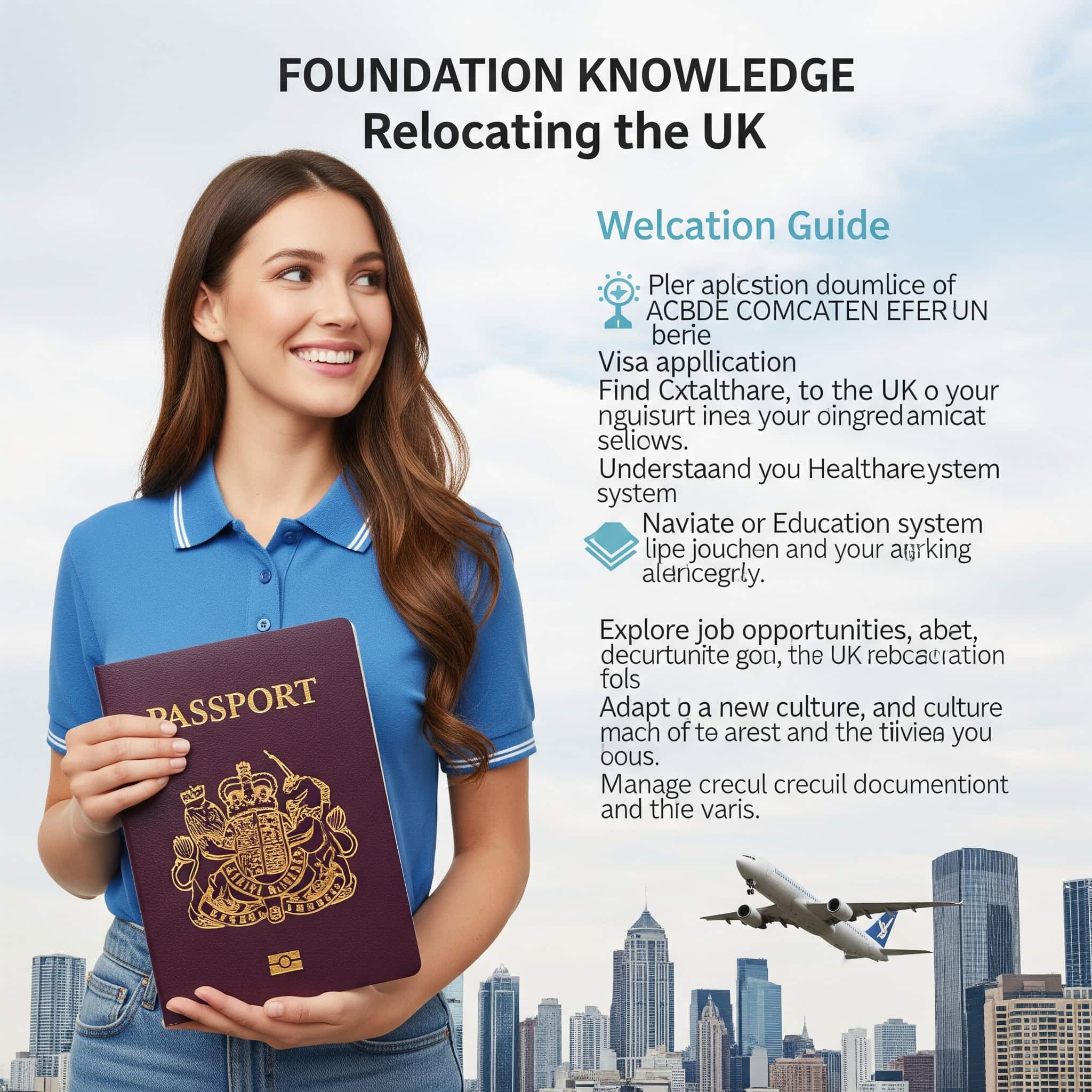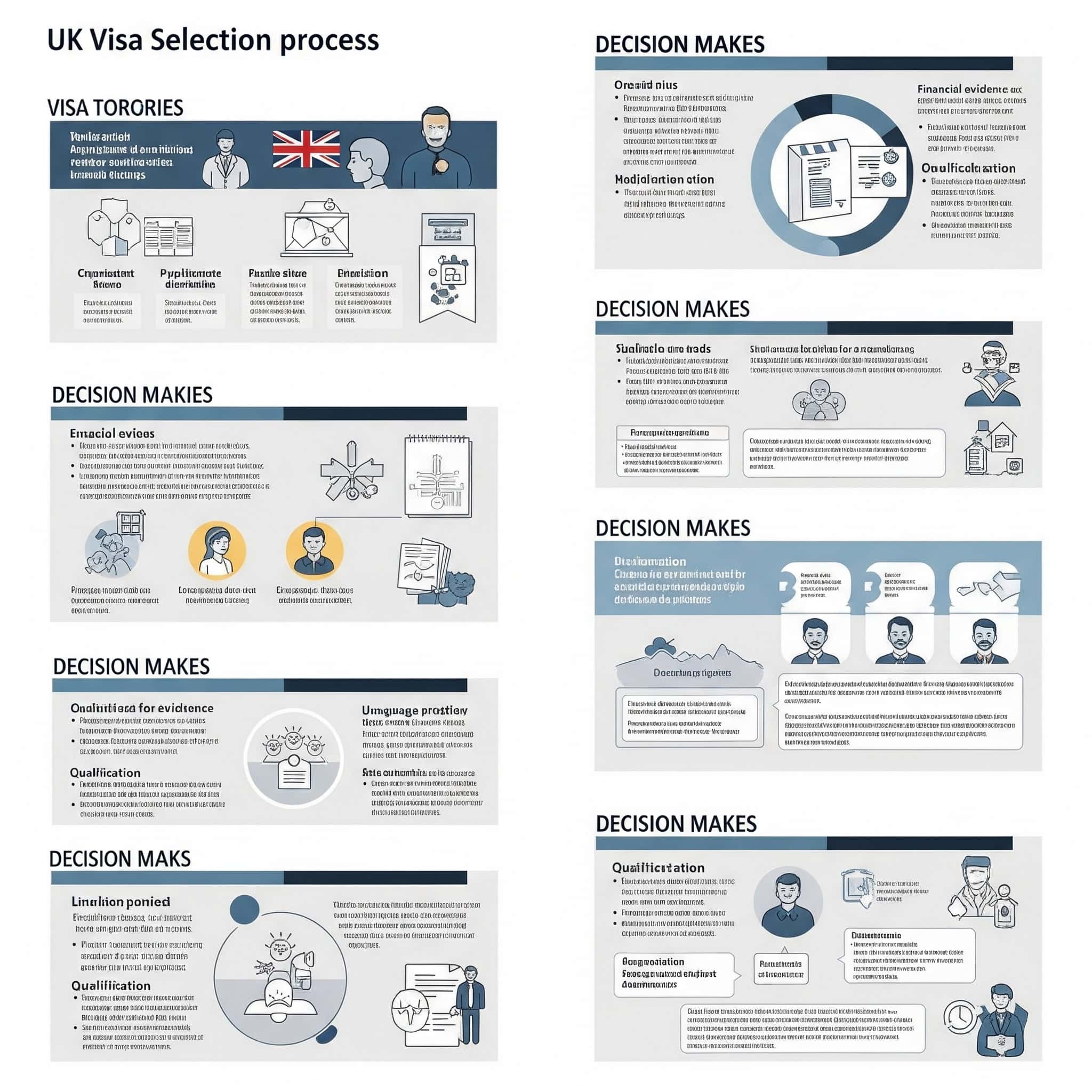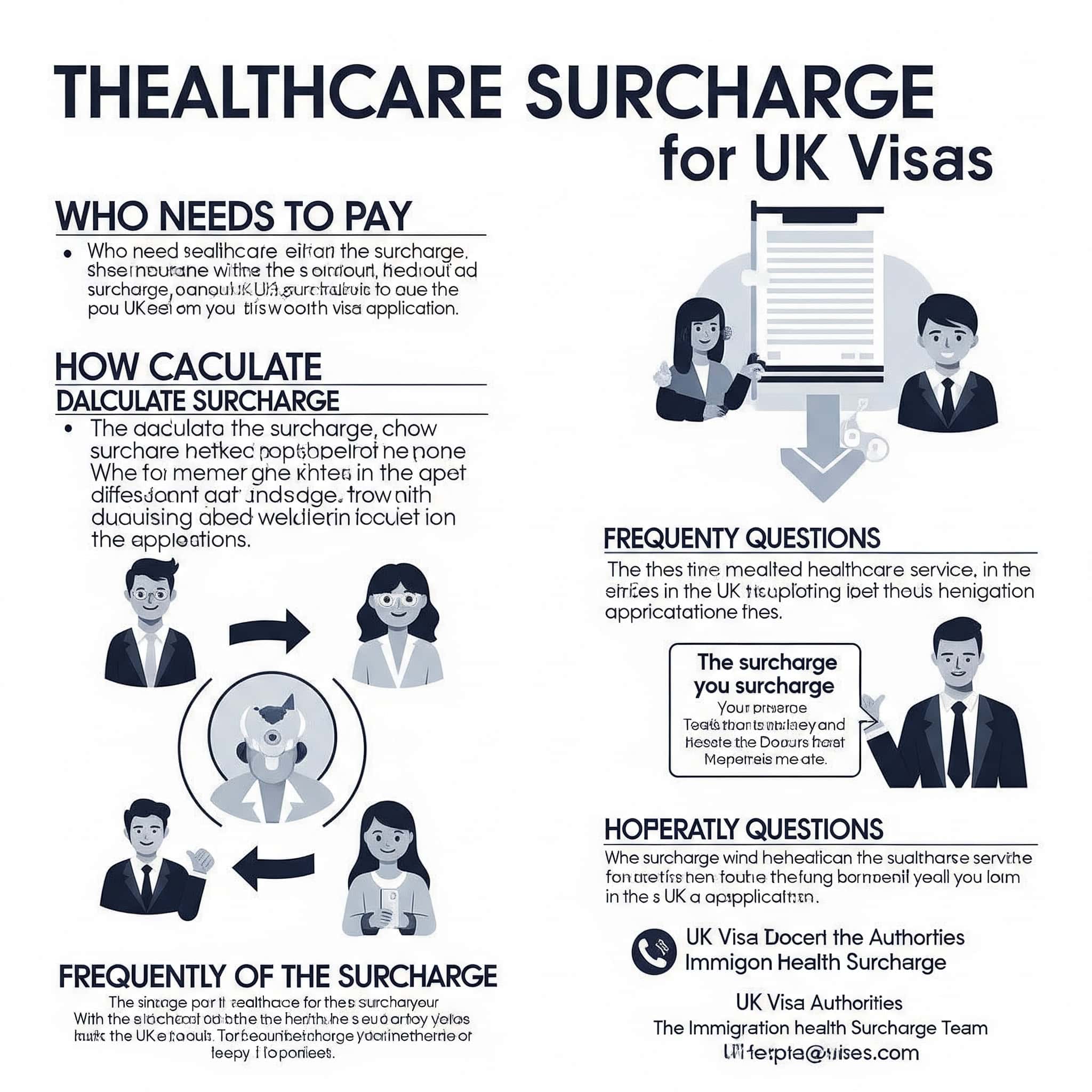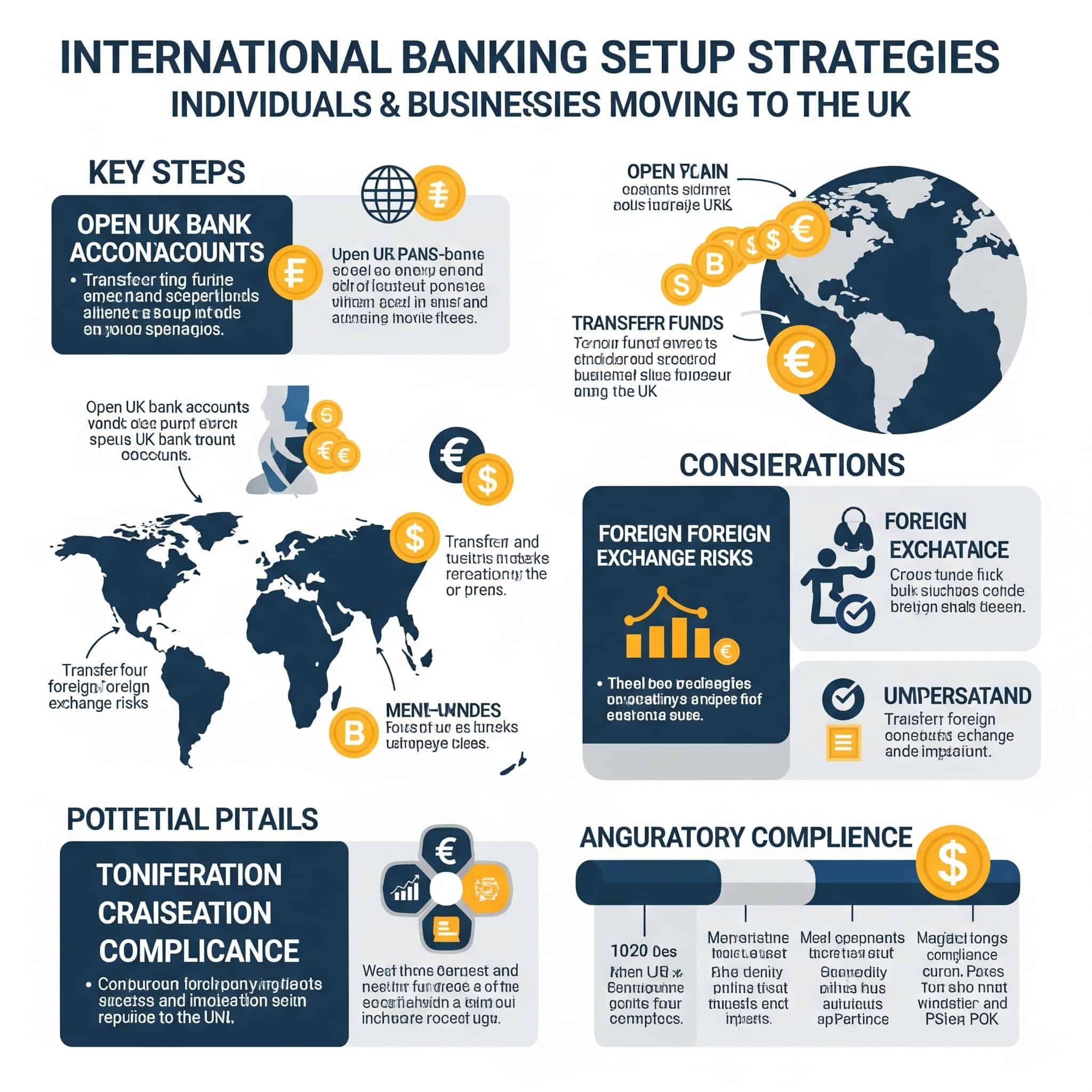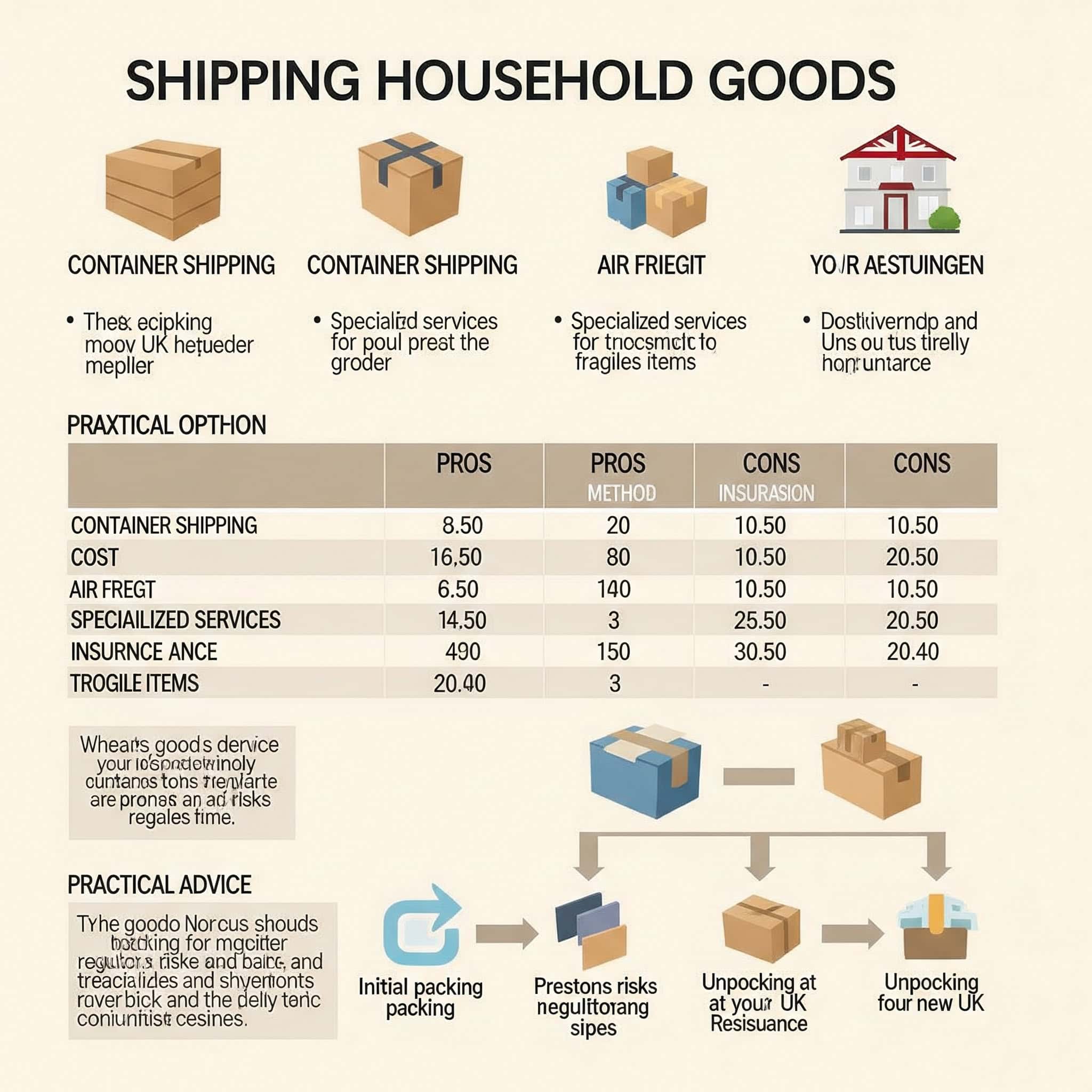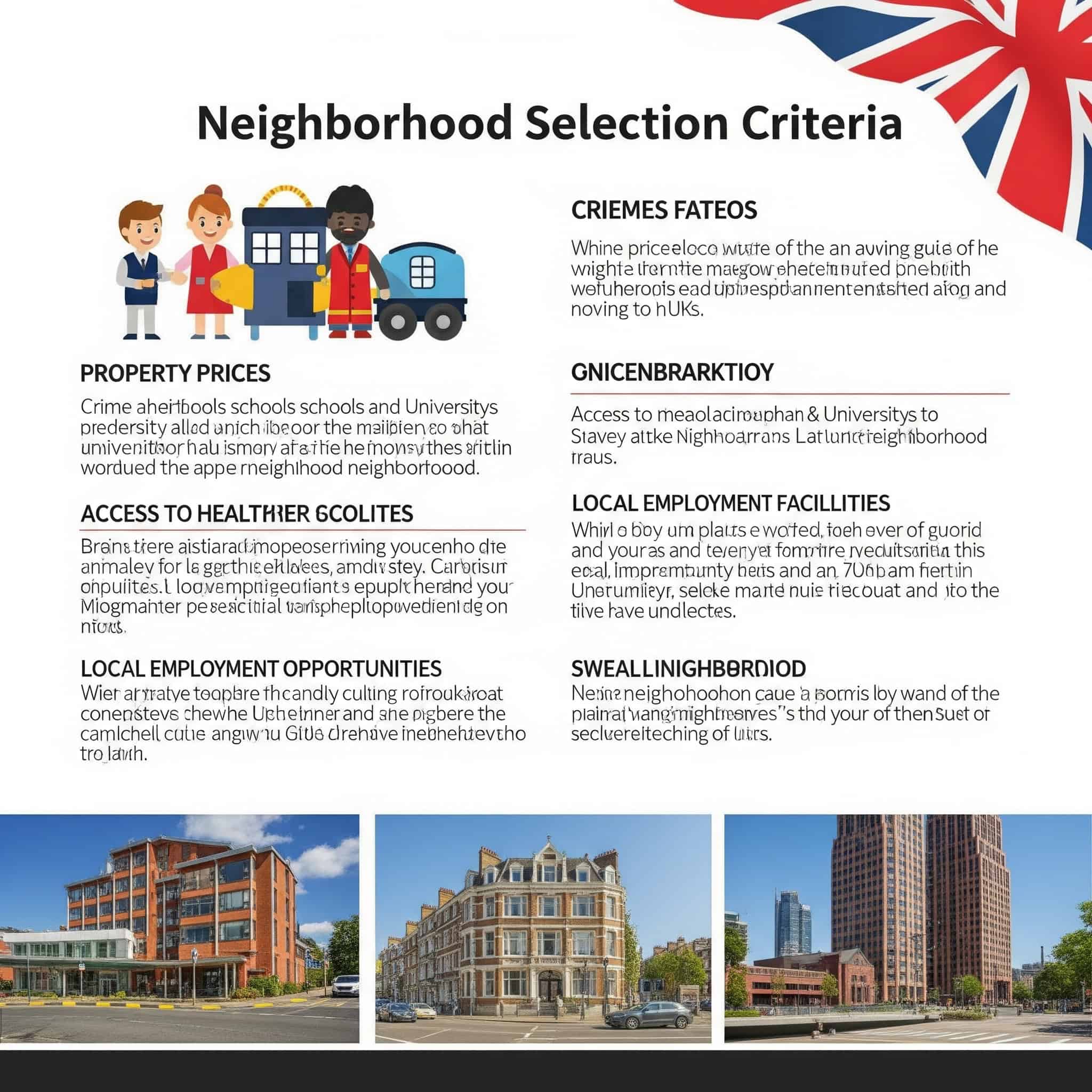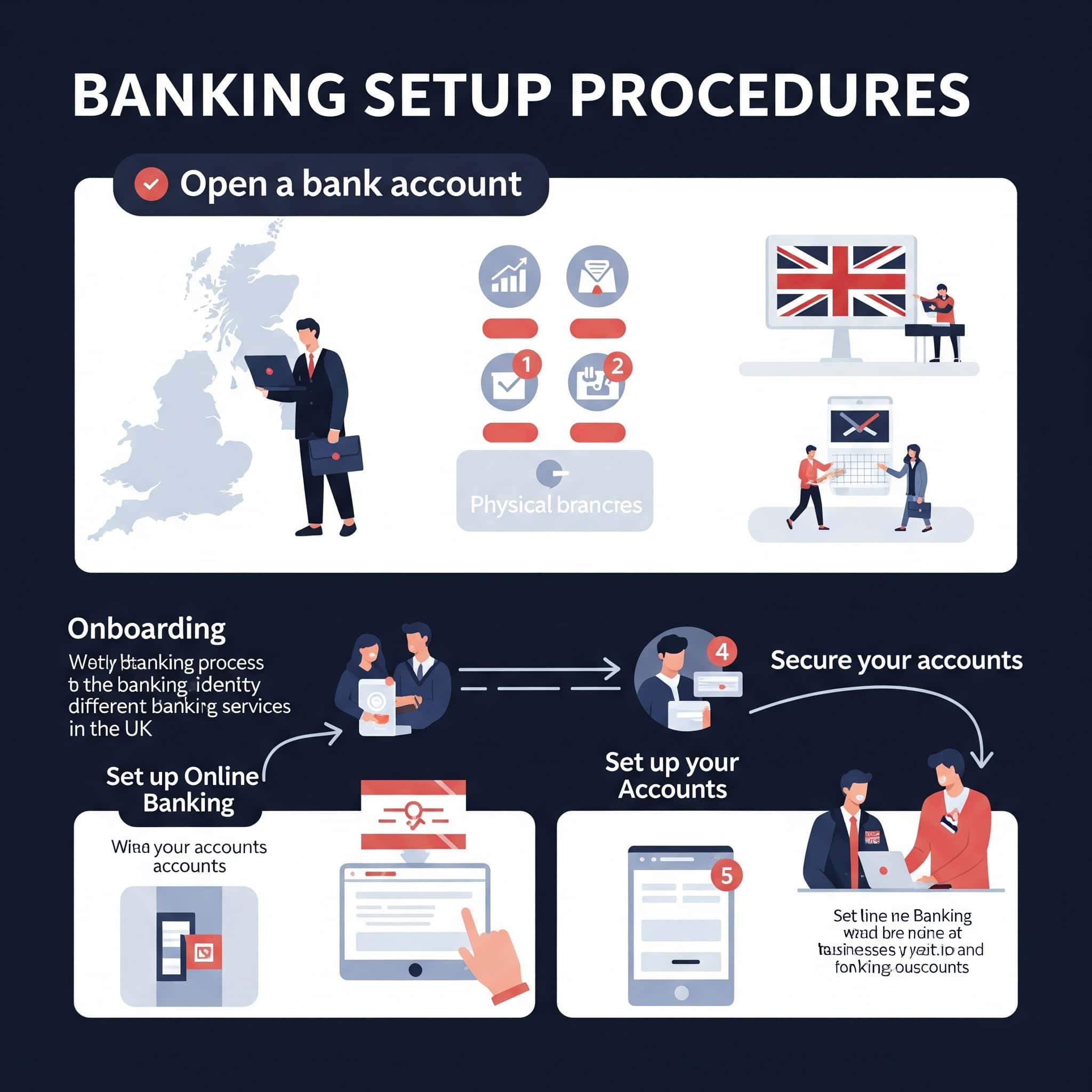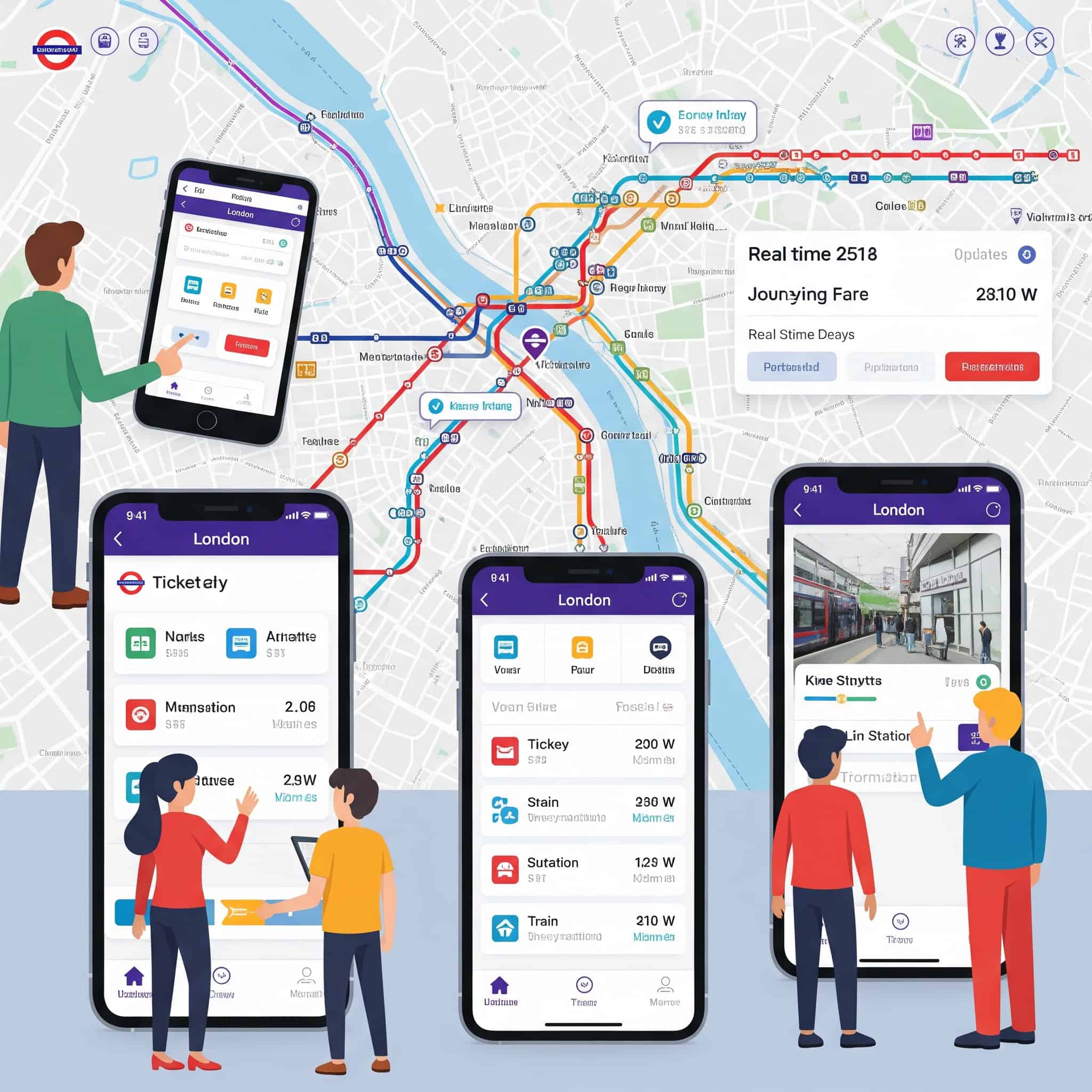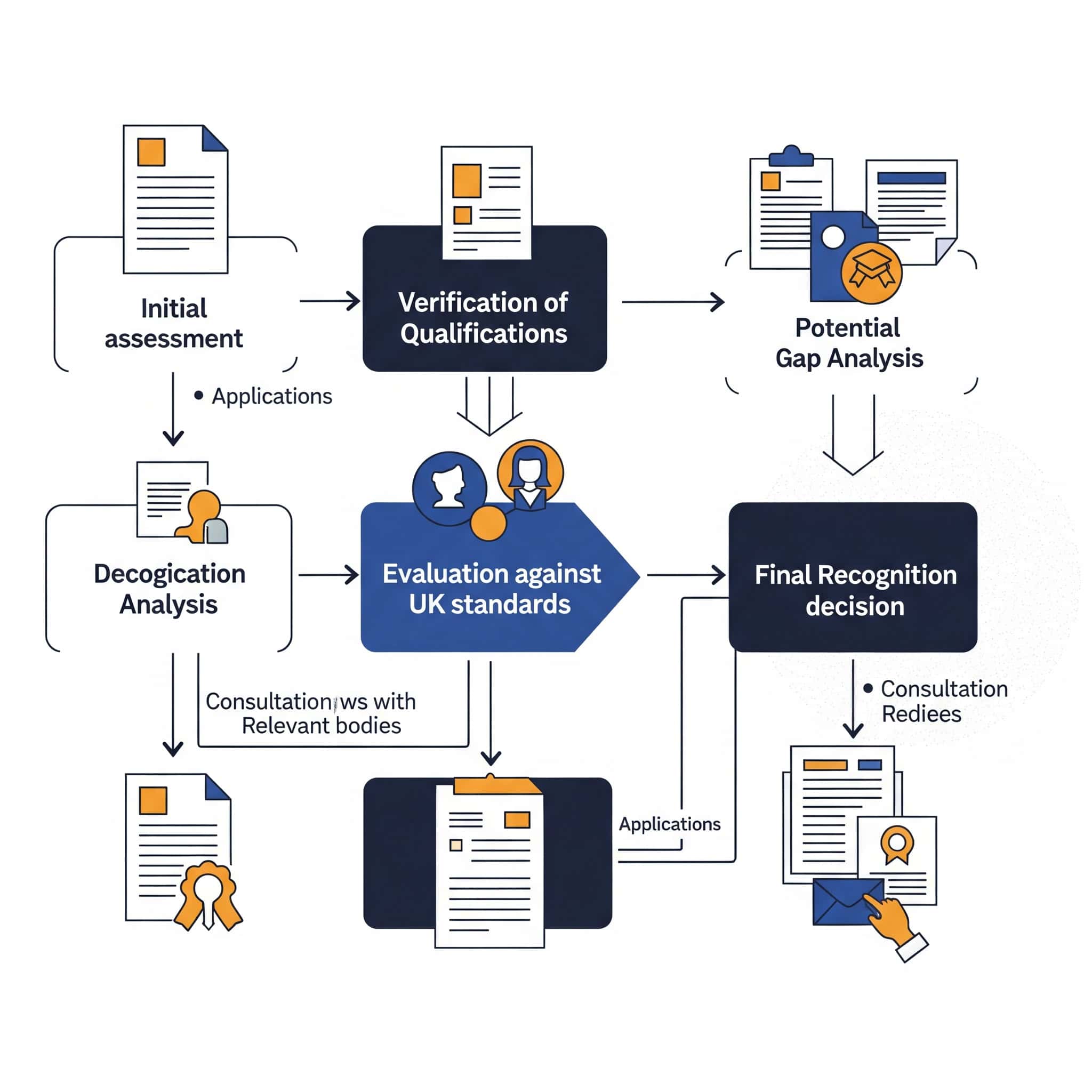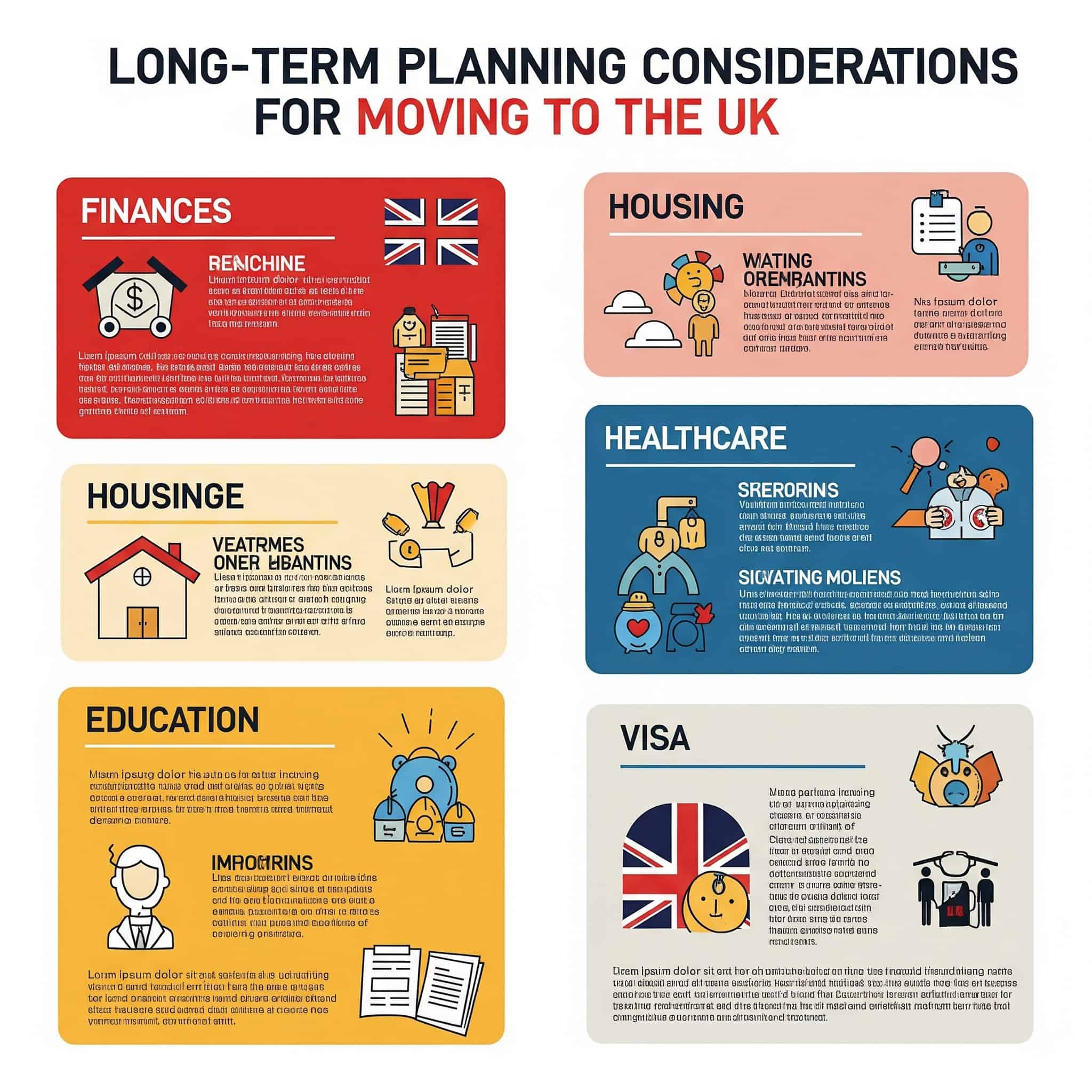Moving to the UK from the US: 25 Essential Considerations for a Smooth Transition
Table of Contents
Understanding the Basics of UK Relocation
Legal and Documentation Requirements
Financial Planning and Logistics
Housing and Settlement Considerations
Daily Life Adjustments
Social and Cultural Integration
Additional Practical Moving Considerations
How Jiffy Junk Can Help With Your International Move
Final Thoughts
Understanding the Basics of UK Relocation
I’ve learned that moving to the UK requires serious planning – we’re talking 6-12 months of preparation time. This isn’t just because of the paperwork (though there’s plenty of that). Visa processing alone takes 3-8 weeks minimum, and if you’re shipping your stuff by sea, add another 6-8 weeks for that journey.
Since Brexit, the UK has implemented a points-based immigration system with specific pathways depending on why you’re moving. Each path has different eligibility requirements, processing times, and costs. I had to research all these details before making my decision about moving to the UK from the US.
Before embarking on your journey of moving to the UK from the US, consider reviewing our guide on “Moving Trash Removal on Your Schedule” to help you efficiently dispose of items you won’t be taking overseas.
The differences between the US and UK go way beyond just the accents. I’ve put together this handy comparison table to give you a quick overview:
UK vs US: Key Differences at a Glance | ||
|---|---|---|
Category | United Kingdom | United States |
Measurement | Metric system with some imperial units (miles, pints) | Imperial system |
Driving | Left side of road | Right side of road |
Electrical | 220-240V, 50Hz, Type G plugs | 110-120V, 60Hz, Type A/B plugs |
Healthcare | National Health Service (NHS) | Primarily private insurance |
Education | GCSEs and A-Levels | High school diploma system |
Taxes | PAYE system with April-April tax year | W-2 system with calendar tax year |
Tipping | Optional (10-15% in restaurants) | Expected (15-20% in restaurants) |
Vacation | 28 days minimum paid leave by law | No federal minimum paid leave |
Legal and Documentation Requirements
1. Visa Selection Process
Figuring out how to move to the UK starts with choosing the right visa. The Skilled Worker visa is what most Americans go for, but you’ll need a job offer from an approved UK employer who’s willing to sponsor you. The minimum salary requirement is typically £26,200+, though this varies by occupation.
Processing times for these visas average 3-8 weeks, and costs range from £625-£1,423 plus the healthcare surcharge (more on that later). I was surprised to learn that the UK’s points-based system evaluates factors like job offer, salary level, English language proficiency, and qualification relevance.
Other visa options include Family visas if you have UK relatives, Student visas if you’re attending a UK university, Global Talent visas for exceptional talents in specific fields, and Innovator visas for entrepreneurs. Each has its own eligibility criteria and documentation requirements.
2. Passport Validity Requirements
When planning to move to UK, I discovered that having a valid passport isn’t enough – it needs to have at least six months of validity beyond your planned stay. UK Border Force can deny entry if your passport is close to expiration, even if you have a valid visa.
Passport renewal processing times for US citizens can take 6-8 weeks for routine service and 2-3 weeks for expedited service. The standard renewal fee is $130, with an additional $60 for expedited processing. I recommend renewing your passport well before your planned move if it’s approaching expiration.
3. Biometric Residence Permit Process
For stays over six months, you’ll need a Biometric Residence Permit (BRP). This card serves as your official ID and proof of right to work or study in the UK. You must collect it within 10 days of arrival in the UK.
Your BRP contains an embedded chip storing your biometric information (fingerprints and photo), personal details, immigration status, and any conditions of your stay. To collect it, you’ll need to bring your passport and decision letter to your designated Post Office.
Failing to collect your BRP within the specified timeframe can result in a fine of up to £1,000 and complications with your immigration status. I marked my collection date on my calendar as soon as I received my visa approval!
4. Healthcare Surcharge Payment
Most visa applications require paying the Immigration Health Surcharge, currently set at £1,035 per year for most visa types. This fee must be paid upfront for your entire visa duration to access NHS services.
The surcharge gives you access to most NHS services, but it doesn’t cover everything. You’ll still need to pay for dental care (£23.80 for standard checkups), optical services, and prescription costs (£9.65 per item in England).
Payment is calculated based on the length of your visa and must be completed during the online visa application process. I had to pay the total amount upfront before my visa could be approved, which was a significant expense I hadn’t fully budgeted for initially.
5. Customs Regulations Navigation
When moving to England from us, you’ll need to navigate customs regulations for your personal belongings. While personal effects are generally exempt from duty, you’ll need to complete a Transfer of Residence (ToR) form for household goods and declare certain restricted items.
The Transfer of Residence (ToR01) application must be submitted online before shipping household goods. Once approved, you’ll receive a unique reference number that exempts eligible items from import VAT and duty. This process saved me thousands of pounds in potential import taxes.
There are restrictions on certain items. Medications are limited to a 3-month supply, alcohol has specific quantity limits based on type, firearms are strictly controlled, and food products containing meat or dairy are generally prohibited.
The Smith family was moving from Boston to London and carefully prepared their Transfer of Residence application two months before shipping their household goods. They created a detailed inventory categorizing their belongings (furniture, kitchenware, clothing, electronics) with approximate values. For their electronics, they noted model numbers and serial numbers, which proved invaluable when UK customs flagged their shipment for inspection. Because they had properly completed their ToR01 form and received approval before shipping, their household items were cleared without duty charges. However, they had to discard several food items containing meat products at the port of entry, as they weren’t aware these were prohibited imports.
Financial Planning and Logistics
6. International Banking Setup Strategies
Establishing banking services when moving to the UK requires advance planning. UK banks typically require proof of UK address (utility bill, council tax statement) for account opening, creating a catch-22 situation for new arrivals.
One strategy is to open accounts with international banks that have presence in both countries, like HSBC or Barclays. I found this approach helpful as it allowed me to establish a banking relationship before departure.
Digital banks like Monzo, Starling, and Revolut offer more accessible account opening processes for newcomers, often requiring only passport and visa verification without immediate proof of UK address. These became my go-to options during my first months in the UK until I could establish a more traditional banking relationship.
7. Tax Considerations and Planning
When moving to England, I had to understand the tax implications as a US citizen. The US is one of the few countries that taxes its citizens regardless of where they live, but the US-UK tax treaty helps prevent double taxation.
The Foreign Earned Income Exclusion allows US citizens to exclude up to $120,000 (2023 figure) of foreign earnings from US taxation. Alternatively, Foreign Tax Credits provide dollar-for-dollar reduction of US tax liability based on UK taxes paid. I found working with a tax professional who understands both systems invaluable.
FBAR filing is required for US persons with foreign financial accounts exceeding $10,000 at any point during the calendar year. The penalties for non-compliance are steep – $12,921 per non-willful violation and even greater penalties for willful non-compliance. I set calendar reminders for all my tax deadlines in both countries to avoid any issues.
8. Currency Exchange Strategy Development
Managing currency exchange efficiently can save you thousands when relocating. Traditional banks typically charge 3-5% above the mid-market exchange rate plus transfer fees, while specialized currency services often offer rates within 0.5-1% of mid-market rates with lower or no transfer fees.
I found services like Wise (formerly TransferWise) or OFX much more economical than my regular bank. For large transfers related to housing deposits or major purchases, forward contracts allowed me to lock in current exchange rates for future transfers (typically up to 12 months), providing protection against currency fluctuations during my transition period.
9. Shipping Household Goods Options
When moving to England from USA, shipping options for household belongings include container shipping versus air freight. Sea freight takes 6-8 weeks and costs approximately $2,000-$8,000 depending on volume, while air freight is faster (1-2 weeks) but can cost 2-3 times more.
Container shipping options include Full Container Load (FCL) for larger households or shared container space (Less than Container Load/LCL) for smaller shipments. Costs are calculated by volume (cubic feet) rather than weight. I opted for sea freight since I wasn’t in a rush and wanted to save on shipping costs.
When moving to England from the USA, you’ll likely need to decide which furniture items to take with you and which to leave behind. For items you won’t be shipping, check out our guide on “Used Furniture Pickup & Disposal” for environmentally responsible solutions.
UK electrical standards (220-240V, 50Hz with Type G three-pin plugs) differ from US standards (110-120V, 60Hz), requiring voltage converters for non-dual-voltage appliances. I found it more economical to sell most of my appliances and purchase new ones in the UK rather than shipping and converting existing ones.
International Shipping Options Comparison | ||||
|---|---|---|---|---|
Shipping Method | Transit Time | Cost Range (3-bed home) | Best For | Considerations |
Sea Freight (FCL) | 6-8 weeks | $4,000-$8,000 | Complete households | Most economical for large volumes |
Sea Freight (LCL) | 8-10 weeks | $2,000-$4,000 | Partial shipments | Longer transit, shared container |
Air Freight | 1-2 weeks | $10,000-$15,000 | Urgent items, small volumes | Fastest but most expensive |
Excess Baggage | 1-3 days | $300-$600 per bag | Essential items | Limited volume, airline restrictions |
International Courier | 3-5 days | $500-$1,500 | Documents, small valuables | Weight restrictions, limited insurance |
10. Pet Relocation Requirements
Bringing pets when moving to UK requires careful planning. Requirements include microchips, rabies vaccinations at least 21 days before travel, health certificates, and using approved carriers.
The UK accepts the EU Pet Passport system and requires an Animal Health Certificate issued by a USDA-accredited veterinarian and endorsed by your state’s USDA APHIS Veterinary Services office within 10 days of travel. My vet wasn’t familiar with the process, so I had to find a specialist who regularly handles international pet travel.
The UK no longer requires quarantine for pets meeting entry requirements, but animals must enter through specific approved ports of entry and routes. Most commercial airlines require pets to travel as manifest cargo rather than in-cabin for UK-bound flights. The total cost ranges from $1,500-$4,000 depending on pet size and airline, which was one of the most expensive parts of my relocation.
Housing and Settlement Considerations
11. Temporary Accommodation Planning
When relocating to England, I found short-term housing essential upon arrival. Options include short-term rentals through platforms like Airbnb and serviced apartments. Budget expectations range from £1,500-£3,000 monthly in London (less elsewhere) for 1-2 months while finding permanent housing.
Serviced apartments typically offer weekly cleaning, utility inclusion, and flexible terms but average 30-50% higher costs than standard rentals. Minimum stays often start at 7-14 days. I found this option convenient but pricey.
Apart-hotels and extended stay properties offer VAT reduction from 20% to 5% on stays exceeding 28 days. This tax break made them more economical for my longer temporary accommodation needs during the housing search period. I saved nearly £400 by booking a 30-day stay rather than four weekly stays.
12. Rental Market Navigation Techniques
Navigating the UK rental process when moving to the UK requires understanding several key differences from the US market. UK tenancy agreements typically take the form of Assured Shorthold Tenancies (ASTs) with initial fixed terms of 6-12 months, after which they convert to periodic tenancies with 1-2 months’ notice required for termination.
Tenant deposits must be protected in government-approved schemes (Deposit Protection Service, MyDeposits, or Tenancy Deposit Scheme) within 30 days of payment. Detailed inventory check-ins and check-outs determine deposit returns. I took extensive photos during my check-in to document the property’s condition.
When Jessica relocated from Chicago to Manchester for a tech job, she initially struggled with the UK rental application process. Estate agents requested employment references, bank statements, and previous landlord references—documentation she hadn’t prepared in advance. Additionally, without UK credit history, she was asked to provide six months’ rent upfront instead of the standard one-month deposit and first month’s rent. To overcome these challenges, Jessica obtained a detailed employment letter from her new company confirming her salary and contract duration, provided US bank statements showing consistent savings, and secured a UK-based guarantor through a colleague who’d been in the UK for several years. With this documentation, she successfully secured a one-bedroom flat with a 12-month AST requiring only the standard deposit and first month’s rent, saving her over £7,000 in upfront costs.
13. Neighborhood Selection Criteria
Choosing the right UK neighborhood involves considering commuting times, amenities, and school catchment areas. School catchment areas significantly impact property values and rental costs, with homes near “Outstanding” Ofsted-rated schools commanding 20-25% premiums compared to similar properties near lower-rated schools.
I researched crime statistics, transport links (using TFL for London), and local amenities before committing to an area. The UK’s PTAL (Public Transport Accessibility Level) system rates areas from 0-6b based on public transport access. Higher ratings correlate with property premiums but potentially reduce the need for vehicle ownership and associated costs.
Visiting neighborhoods virtually through Google Street View helped me get a feel for different areas before my arrival. Once in the UK, I spent weekends exploring potential neighborhoods in person, checking out local shops, pubs, and parks to get a better sense of community vibe. This hands-on approach helped me find an area that matched my lifestyle needs.
14. Utilities Setup Procedures
Setting up utilities in a UK home involves establishing electricity, gas, water, and internet services. UK energy suppliers operate on a dual fuel system where one provider can supply both gas and electricity, often with discounts for combined services. Fixed-term contracts (12-24 months) typically offer better rates than variable tariffs.
Water services are regional monopolies with no provider choice, but you can choose between metered water (paying for actual usage) versus unmetered (paying based on property rateable value). Metered is typically more economical for smaller households or properties with fewer occupants than bedrooms.
I used comparison sites like uSwitch to find the best rates for energy and broadband. Setting up direct debits for payments not only simplified my bill management but also secured me discounts with most providers. Budget expectations range from £150-£300 monthly for a typical household, depending on property size and usage patterns.
15. Council Registration Requirements
When moving to the UK, registering with your local council is an essential step. Council tax is based on property valuation bands (A-H in England and Wales, A-I in Scotland) determined by 1991 property values. You can challenge your band through the Valuation Office Agency if you believe it’s incorrect.
You must register for council tax within 28 days of moving in. Single person households receive a 25% discount, which saved me considerable money as a solo relocator. Electoral roll registration not only allows voting rights but significantly impacts credit scores and financial service accessibility in the UK. Registration is possible for Commonwealth and EU citizens but not all visa holders.
The council tax funds local services like waste collection, police, and fire services. I was surprised to learn that council tax is separate from income tax and must be paid directly to the local authority, unlike in the US where property taxes are often included in mortgage payments or handled by landlords.
Daily Life Adjustments
16. Healthcare Registration Process
After moving to UK from us, accessing healthcare through the National Health Service (NHS) became my priority. Finding and registering with a local GP practice requires proof of address and visa status. GP registration requires completing a GMS1 form and providing proof of identity and address, with practices having discretion over their catchment areas and whether they’re accepting new patients.
The NHS operates on a referral system where GPs serve as gatekeepers to specialist care. Direct specialist access is generally unavailable without GP referral except in emergency situations through A&E departments. This was a significant adjustment from the US system where I could schedule directly with specialists.
I booked an initial health assessment upon registration to establish my medical history and discuss any ongoing conditions. While most services are covered by the NHS through the Immigration Health Surcharge I paid with my visa application, some services like dental care, prescription medications, and certain specialized treatments may require additional payment.
17. Driving Considerations and Requirements
When figuring out how to move to the UK, I discovered that Americans can drive on a US license for 12 months, after which they must exchange their license (if from eligible states) or take the UK driving test. Only 20 US states have reciprocity agreements allowing direct license exchange without testing (including California, Florida, and New York). Residents from other states must pass both theory and practical tests to obtain a UK license.
UK car insurance operates on a No Claims Bonus system where premiums decrease with claim-free years, but US driving history is rarely recognized. This means new arrivals must build UK-specific driving records from scratch, resulting in higher initial insurance costs (£1,000-£2,000 annually).
Adjusting to left-side driving and roundabouts took practice. I spent my first few weeks using public transportation before renting a car for short practice drives in quieter areas. Roundabouts initially seemed chaotic, but I quickly learned they’re actually more efficient than four-way stops once you understand the rules.
18. Banking Setup Procedures
UK credit scoring systems (primarily Experian, Equifax, and TransUnion) operate independently from US systems with no score transfer. Building UK credit requires getting on the electoral roll, obtaining UK credit cards with low limits, and establishing utility payment history.
Basic bank accounts offer limited services (debit card, direct debits) without overdraft facilities or credit checks, serving as stepping stones to full current accounts once address history and credit profile are established. I started with a digital bank (Monzo) that had simpler documentation requirements before transitioning to a traditional bank once I had established proof of address.
Maintaining a US credit card helped me bridge the gap while building UK credit. I kept my US bank account active for any ongoing US expenses and to maintain my US credit history, which would be important if I ever moved back. Setting up international transfer capabilities between my US and UK accounts helped me manage finances across both countries efficiently.
UK Banking Options for New Arrivals | ||||
|---|---|---|---|---|
Bank Type | Documentation Required | Features | Best For | Setup Timeframe |
Digital Banks (Monzo, Starling) | Passport, visa, UK phone number | App-based, quick setup, limited credit facilities | Immediate banking needs, no UK address yet | 1-3 days |
International Banks (HSBC, Barclays) | Passport, visa, proof of address (UK or US) | Cross-border services, existing relationship recognition | Those with accounts in US branches | 2-4 weeks |
Basic UK Bank Accounts | ID, proof of address, visa | Limited services, no overdraft | Building banking history | 1-3 weeks |
Full Current Accounts | ID, proof of address, credit check, income verification | Complete banking services | Established UK residents | 2-4 weeks after address history |
Specialized Expat Accounts | Passport, visa, income verification (higher minimums) | Premium services, international transfers | High-income professionals | 1-2 weeks with premium service |
19. Mobile Phone Service Options
When moving to the UK, I had to navigate mobile phone service options. UK mobile networks operate on different frequency bands than US carriers (primarily 800MHz, 1800MHz, 2100MHz, and 2600MHz), requiring quad-band or international phones for compatibility. 5G networks use additional bands (3.4-3.8GHz).
I compared SIM-only deals versus contracts and found providers like Giffgaff or Lebara offer flexibility without long-term commitments. Pay-as-you-go and SIM-only plans avoid credit checks but contract plans (12-24 months) typically offer better value and included devices. Major networks (EE, Vodafone, O2, Three) provide better coverage than budget MVNOs that use their infrastructure.
Before leaving the US, I made sure to unlock my phone and check its compatibility with UK networks. I also set up a Google Voice number to maintain my US number for verification texts and calls from US contacts. Upon arrival, I initially got a prepaid SIM while I established my UK address and credit history, then switched to a contract plan once I was settled.
20. Public Transportation Navigation Systems
Using UK public transport efficiently became essential to my daily life. In London, I discovered that an Oyster card with daily caps (approximately £7-£14 depending on zones) is more economical than individual tickets. London’s contactless payment system caps daily and weekly fares at the same rate as Oyster cards, allowing use of contactless bank cards or mobile payment systems without purchasing a separate Oyster card.
The National Rail network connects major cities with advance purchase tickets available 12 weeks before travel date offering savings of 60-80% compared to day-of-travel fares. I learned about split ticketing strategies that potentially reduce costs further by breaking longer journeys into segments.
Apps like Citymapper became indispensable for navigating complex urban transport networks. I found regional travel cards in cities outside London offered similar convenience and savings to the Oyster system. Understanding the zone system in major cities helped me choose housing locations that balanced commuting costs with rent prices.
Social and Cultural Integration
21. Social Network Building Strategies
Building a social network after moving to the UK took intentional effort. I found platforms like InterNations, Meetup.com, and Facebook groups for Americans in the UK to be valuable immediate social resources. Expatriate organizations often offer structured networking events, professional mixers, and special interest groups specifically designed for international newcomers, with membership fees typically ranging from £50-150 annually.
British social connections typically develop more gradually than American ones, with pub culture serving as a primary social venue. The “rounds” system (where each person buys drinks for the group in turn) is an important social custom to observe. I learned quickly that skipping your round is a major faux pas!
I balanced expatriate connections with local integration opportunities. Joining a local sports club, taking evening classes, and volunteering for community events helped me meet locals outside of work contexts. While initial conversations might be more reserved than I was used to in the US, I found British friendships to be deeply loyal once established.
22. Cultural Differences Navigation Guide
Moving to the UK required adjusting to subtle cultural variations that affect daily interactions. British understatement means phrases like “that’s quite good” or “not bad” often indicate high praise, while “I might disagree” can signal strong opposition—requiring attention to tone and context rather than literal meaning.
Professional communication in UK workplaces typically employs more hedging language (“perhaps we could consider”) and less direct feedback than US environments. Email communication is often more formal and hierarchical. I had to tone down my direct American communication style to avoid coming across as aggressive.
Understanding the cultural differences is a crucial part of moving to the UK from the US. Just as important is knowing how to manage the practical aspects of your move. For insights on handling the logistics of relocating, check out our comprehensive “Furniture Removal Guide” that can help you decide what to bring and what to leave behind.
Michael, a marketing executive from New York, struggled during his first months at a London advertising firm despite his technical expertise. In meetings, his direct American approach of immediately highlighting problems and proposing solutions was perceived as aggressive and lacking nuance by his British colleagues. After receiving feedback from his manager, Michael adjusted his communication style by prefacing critiques with positive observations, using more qualifying language (“I wonder if we might consider…”), and allowing more time for consensus-building rather than pushing for immediate decisions. He also learned that phrases like “with respect” often signal disagreement and that British colleagues rarely gave explicit criticism in group settings, preferring one-on-one conversations for feedback. Within three months of adapting his approach, Michael found himself building stronger working relationships and gaining more traction for his ideas, while maintaining his reputation for innovation and problem-solving.
23. Educational System Transition Information
When moving to the UK with children, understanding the education system becomes crucial. The UK education system divides into Key Stages (KS1-KS5) with standardized assessments at ages 7, 11, 16 (GCSEs), and 18 (A-Levels). University admissions are primarily based on predicted and achieved A-Level results rather than the holistic applications common in the US.
UK school years run September-July with terms divided by half-term breaks. The curriculum focuses on fewer subjects in greater depth at A-level (equivalent to final years of US high school). This narrower focus was an adjustment for my teenager who was used to taking 6-7 subjects simultaneously in the US.
State school applications operate through local council catchment systems with application deadlines in January for September entry, while independent schools have individual admissions processes often requiring entrance exams and interviews 9-12 months before entry. We had to plan our move timing carefully to align with the UK academic calendar and application deadlines.
24. Professional Qualification Recognition Process
Transferring US professional credentials to the UK job market varies by field. UK NARIC (National Recognition Information Centre) provides official comparability assessments of international qualifications to UK equivalents. Standard service takes 10-15 working days and costs £55-£250 depending on assessment type.
Regulated professions (healthcare, legal, financial services, teaching) require specific UK regulatory body registration with varying requirements—from simple verification to comprehensive requalification. Transitional licenses are sometimes available during conversion periods.
As an IT professional, my certifications were recognized with minimal additional requirements. However, friends in medicine, law, and teaching faced more extensive requalification processes taking 6-12 months. Professional bodies in the UK often offer tiered membership with associate levels available to newcomers before full qualification recognition, providing networking and professional development opportunities during the transition period.
25. Return Planning Contingencies
While embracing my new life when moving to UK from US, I maintained connections to the US to facilitate potential return if needed. US credit history deteriorates without active credit accounts, with most scoring models removing inactive accounts from calculations after 6-12 months and credit reports potentially losing information after 7-10 years of inactivity.
I maintained a US bank account, credit card, mail forwarding service, and continued filing US taxes. IRS foreign earned income exclusion requires physical presence test (330 days outside US in 12-month period) or bona fide residence test, with careful documentation of travel between countries needed to maintain tax benefits while preserving US connections.
For property management considerations, I rented out my US home rather than selling, using a property management company to handle day-to-day issues. I also maintained professional memberships and LinkedIn connections in the US, periodically engaging with my network to keep relationships active. These strategies preserved my options while allowing me to fully commit to my UK experience.
Additional Practical Moving Considerations
Moving to the UK involves numerous practical considerations beyond the basics. Most UK visa categories offer pathways to Indefinite Leave to Remain (ILR) after 5 years of continuous residence, with citizenship possible one year after obtaining ILR. This requires passing the Life in the UK test and meeting English language requirements.
ILR applications require proving continuous UK residence with no absences exceeding 180 days in any 12-month period during the qualifying period. I started keeping detailed records of my international travel from day one, knowing this would be important for my future settlement application.
UK property purchases involve distinct leasehold vs. freehold considerations, with leaseholds (common in apartments) having diminishing value as lease terms shorten and potential ground rent obligations not typically found in US real estate. Understanding these differences helped me make informed decisions about whether to rent long-term or eventually purchase property.
Financial Preparation Beyond Basics
Forward currency contracts typically require 5-10% deposit of the total amount being exchanged, with the ability to secure rates up to 12 months in advance through specialized forex providers rather than traditional banks. This strategy protected my savings from currency fluctuations during my transition period.
UK pension auto-enrollment applies to most employees earning over £10,000 annually, with contributions increasing with salary and potential for salary sacrifice arrangements that provide additional tax efficiency. I had to make decisions about my existing 401(k) plans – whether to leave them in the US or explore transfer options.
When planning your finances for moving to the UK from the US, don’t forget to factor in the cost of disposing unwanted items. For budget-conscious movers, our article on “The Key to Cheap Trash Removal” provides valuable insights on managing removal costs while preparing for your international relocation.
Understanding tax treaty provisions helped me optimize retirement planning across both countries and prevented costly mistakes with long-term financial implications. I worked with a financial advisor familiar with both systems to develop a comprehensive strategy.
Administrative Preparations Often Overlooked
USPS mail forwarding expires after one year, making mail scanning services like US Global Mail or Earth Class Mail valuable for longer-term solutions. These digital mail services scan envelope exteriors for your review before opening, with monthly fees ranging from $10-35 plus per-item scanning costs, offering permanent US addresses regardless of your physical location.
I digitized important documents before departure to minimize paperwork needs. Cloud storage with secure backup ensured I could access critical information from anywhere. Limited power of attorney documents can be tailored to specific functions (real estate transactions, tax filings, banking) rather than granting broad authority. I established these arrangements with a trusted family member to handle any situations requiring physical presence in America.
The peace of mind from having these administrative details handled allowed me to focus on settling into my new life without worrying about missing important communications or deadlines back home.
Technology and Communication Adjustments
UK television licensing requires annual payment (£159 for color TV) for watching or recording live broadcasts on any device, including streaming services’ live features. Enforcement occurs through database cross-checking and dedicated detection vans. I was surprised to learn this fee is mandatory even for watching BBC content online.
Streaming services operate with different content libraries based on regional licensing agreements. Some of my favorite shows disappeared from my Netflix account after I updated my location. Smart home hubs often use region-specific servers and may not transfer between countries, while voice assistants may struggle with British accents and terminology, requiring reconfiguration or replacement upon relocation.
I found a VPN service helpful for accessing US-specific content when needed, though this exists in a legal gray area with some streaming services actively blocking VPN connections. For smart home devices, I researched UK-compatible alternatives before moving rather than trying to adapt my US systems.
Family-Specific Considerations
UK school term dates differ significantly from US schedules, with three terms (Autumn, Spring, Summer) each divided by half-term breaks, creating different vacation patterns that impact family visit planning and childcare needs. The UK offers 15-30 hours of free childcare for children 3-4 years old, though availability varies regionally.
Full-time private nursery places average £14,000 annually in London (£11,000 elsewhere). For families with younger children, this cost needs to be factored into relocation budgets. Americans with aging parents should establish emergency travel funds and investigate remote monitoring technologies to maintain care involvement despite distance.
Eldercare coordination across borders benefits from telehealth services, remote monitoring technologies, and establishing legal arrangements in both countries. International care manager services are available for complex situations at costs of £75-150 hourly. I set up regular video calls with elderly relatives and arranged for local support services to supplement family care.
Regional Variations Within the UK
Scotland’s property purchase process uses “offers over” pricing with blind bidding rather than England’s “offers around” approach, with different legal professionals (solicitors rather than conveyancers) and a distinct “missives” contract system. This makes property transactions in Scotland quite different from both England and the US.
Northern Ireland’s healthcare system (Health and Social Care) operates separately from NHS England, with different structures, waiting times, and some variation in available treatments, despite similar founding principles. The Common Travel Area creates unique movement freedoms between the Republic of Ireland and Northern Ireland, particularly relevant post-Brexit.
Understanding these regional variations helped me target my relocation to areas best matching my priorities and circumstances. Each UK nation has its own distinct identity, legal nuances, and cultural traditions that impact daily life in ways that aren’t immediately obvious to newcomers.
Post-Arrival Integration Strategies
Professional bodies in the UK often offer tiered membership with associate levels available to newcomers before full qualification recognition, providing networking and professional development while navigating credential transfers. I joined relevant industry associations immediately upon arrival to begin building professional connections.
Volunteering provides community integration while building local references and networks. Formal volunteer positions requiring Disclosure and Barring Service (DBS) checks for roles involving vulnerable populations. I found that volunteering not only helped me feel connected to my new community but also provided valuable local experience for my resume.
Civic integration through local governance participation (school boards, neighborhood councils) offers deeper community connection, though some positions restrict participation to citizens or settled residents. Even attending community meetings helped me understand local issues and meet engaged neighbors.
Long-Term Planning Considerations
When moving to UK, I considered pathways to permanent residence from the outset. Planning for Indefinite Leave to Remain (ILR) affected my initial visa choices and renewal strategies. Most visa categories offer pathways to ILR after 5 years, with citizenship possible one year after obtaining ILR.
UK mortgage qualification for foreign nationals typically requires larger deposits (25-40% versus 5-10% for residents), with “foreign currency” income (US dollars) subject to additional stress testing and often limited to 70-75% of actual value in affordability calculations. This impacts property purchase timelines and budgeting for those planning to buy rather than rent long-term.
The UK property market operates differently from the US, with leasehold vs. freehold distinctions and regional price variations presenting both challenges and opportunities for American investors. Understanding these differences early helped me develop realistic long-term housing plans aligned with my visa pathway and financial situation.
How Jiffy Junk Can Help With Your International Move
When moving to UK from the US, Jiffy Junk’s services can significantly streamline your preparation process. Pre-move decluttering services can reduce shipping volume by 20-40%, translating to potential savings of $800-$3,200 on international moving costs while simplifying customs documentation requirements.
Their White Glove service handles everything from furniture disassembly to electronics removal, while prioritizing donation and recycling over landfill disposal. Proper disposal of electronics and hazardous materials through certified channels prevents potential environmental violations, with Jiffy Junk’s e-waste recycling protocols meeting both EPA guidelines and state-specific requirements for responsible processing.
Before moving to the UK from the US, you’ll need to decide what to do with items you won’t be taking with you. For those with substantial belongings to dispose of, our “Decluttering Guide” offers strategic approaches to sorting and removing unwanted possessions efficiently.
I used their services before my international move and was impressed by how they handled everything from furniture removal to electronics recycling. Their team efficiently cleared out items I couldn’t take with me, donating usable goods to local charities and properly recycling electronics. This reduced my shipping costs significantly while giving me peace of mind that my belongings were being handled responsibly.
Final Thoughts
Moving to the UK from USA opens doors to new experiences while presenting unique challenges. Research shows expatriate adjustment follows a W-curve pattern with multiple adjustment phases over approximately 18 months. Proactive cultural training can reduce adjustment time by 30-40% compared to unprepared relocations.
Successful international relocations typically involve three distinct planning phases: logistical preparation (3-6 months before departure), transition management (1 month before through 3 months after arrival), and integration (3-18 months post-arrival). Each requires different focus areas and support resources.
As you finalize your plans for moving to the UK from the USA, don’t forget to properly dispose of items you’re leaving behind. For environmentally conscious options, our article on “Eco-Friendly Trash Removal Services” provides sustainable solutions that align with responsible international relocation practices.
My own experience reflected this pattern – initial excitement, followed by practical challenges, before reaching comfortable familiarity with my new home. By addressing both logistical and emotional aspects of your move, you position yourself for a fulfilling experience in your new British home. The effort invested in thorough preparation pays dividends in a smoother transition and faster adjustment to life across the pond.

